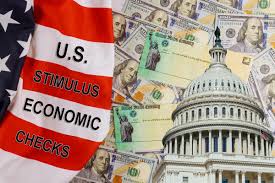Everything you need to know about the second Coronavirus Stimulus Bill
- Posted on July 28, 2020
- Editors Pick
- By Victoria

Yesterday, the Senate Majority Leader Mitch McConnell (R-Ky.) announced the long-awaited upper chamber's coronavirus stimulus package Health, Economic Assistance, Liability Protection, and Schools, or HEALS Act.
HEALS was set up as the second coronavirus stimulus package intended to offset the economic impact of a pandemic, especially in schools. The $1 trillion bills would include an extra weekly $200 in unemployment insurance, a $400 decrease in the CARES Act which was $600. However, HEALS would include more money for schools and other necessary aspects.
"The American people need more help," McConnell said. "The pandemic is not finished. The economic pain is not finished. So Congress cannot be finished either."
A memo from the Senate Financial Committee revealed that the bill includes a second direct payment check of $1200. The second direct check payment would follow the same guidelines as the first. This implies that individuals earning a gross adjusted income up to $75,000 as of 2019, or couples earning a gross adjusted income up to $150,000 as of 2019, would be qualified for the check. Couples would also be eligible to collect twice the amount, ie, $2400.
Next, the check would be reduced by $5 for every $100 income. Also, those who have no substantial means of livelihood or earning their major income from SSI programs would also be qualified. In addition to this, just as it was in the CARES Act, individuals would also receive $500 for each dependent. Unlike CARES with a dependent cap from age 17 and above, there is no age cap on those who are qualified to benefit from the second stimulus. This implies that more high school students would be able to benefit from this.
"The check is there," White House economic advisor Larry Kudlow said Sunday on CNN. "The reemployment bonus is there. The retention bonus is there. There will be breaks for small tax credits for small businesses and restaurants. That's all going to be there."
The Senate, however, added that anyone who died before January 1st would not benefit from this. In the same vein, prisoners are also excluded from the stimulus.
The requirement for the stimulus entails detailed information about your bank account or your place of residence. All of these can be provided on the IRS websites.
However, before the final package is passed, the Senate and some leaders from the White House, especially those that introduced the $3 trillion HEROES Act in May would sit and negotiate on it. This is expected to extend up till August.
There is also the likelihood that some of the provisions in the bill would be changed. According to Senate Minority Leader Chuck Schumer (D-N.Y.) and Speaker of the House Nancy Pelosi (D-Calif.), the bill does not include the necessary things needed to help the coronavirus recession. This includes provisions for "hazard pay for essential workers," inadequate plan for eviction crisis, and absence of additional funding for food stamps. These and many more are part of the issues that needed to be addressed before the bill is passed.
Also, when the bill is passed, including the $1200 check, it would take some time to start getting into the hands of eligible Americans.
Details of the second coronavirus stimulus package
This morning, the Republicans labor sec Scalia appeared on CNBC news to highlight the details of the second stimulus package. This include:
$105 billion for schools, including universities to cover all COVID-19 related expenses necessary for the reopening of schools.
$190 billion available to businesses through the Paycheck Protection Program.
$1200 direct payment to individuals
$500 direct payment to each child
$16 billion in new funding for testing
$1.75 billion for new funding in FBI building in Washington.


Be the first to comment!
You must login to comment